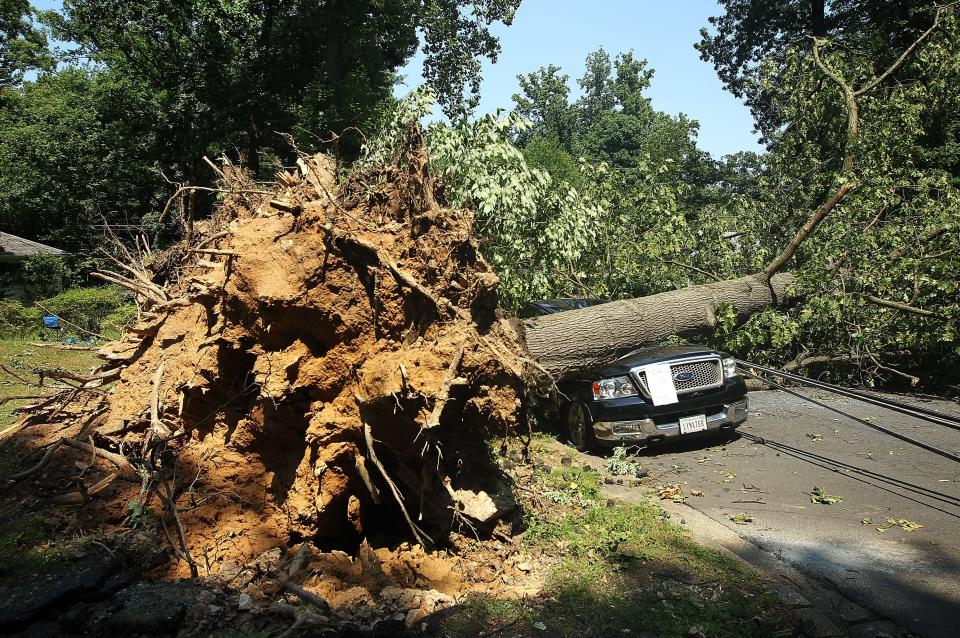What is a derecho? These 'inland hurricanes' can cause tremendous damage
Sometimes referred to as an inland hurricane, derechos are among weather's most destructive phenomena. But what, exactly, is a derecho?
The National Oceanic and Atmospheric Administration (NOAA) defines a derecho (duh-RAY'-choh) as "a widespread, long-lived wind storm that is associated with a band of rapidly moving showers or thunderstorms."
Derechos can pack lethal gusts in excess of 100 mph – hurricane strength – across a front stretching for many miles, and last for hours. Storms that have sustained winds of at least 58 mph and leave a path of damage at least 250 miles long qualify as derechos, according to the National Weather Service.
Many classic derechos have winds that can top 100 mph, causing extensive damage, leading to massive power outages and toppling tons of trees.
Derechos are a relatively rare event, as they only tend to occur from once a year to once every four years across portions of the eastern two-thirds of the U.S., according to the National Weather Service.
“People should take these storms seriously,” Weather Service meteorologist Brian Barjenbruch said. “These winds are incredibly strong.”
WHAT IS A FLASH FLOOD WATCH OR WARNING? Here's what to know about this deadly weather hazard
70% of derechos strike from May through August
A 700-mile derecho in June 2012 that roared into Washington, D.C., topped 100 mph.
Another recent derecho that blasted across the Midwest in August 2020 killed four people and left behind billions of dollars in damage. It had wind gusts that were estimated as high as 140 mph in Cedar Rapids, Iowa.
By definition, a derecho should have winds that persist for at least six hours; however, they can last much longer. The 2020 Midwest derecho lasted for 14 hours.
INLAND HURRICANE: Deadly derecho leaves path of destruction across Midwest, 800,000 without power
Most derechos, 70%, occur during the months of May through August, the Weather Service said.
Although a derecho can produce destruction similar to the strength of tornadoes, the damage typically moves in one direction along a relatively straight swath, the Weather Service said. As a result, the term "straight-line wind damage" sometimes is used to describe derecho damage.
WHAT IS A TORNADO?: Everything you need to know about these violent storms
Where did the term derecho come from?
The term derecho was coined in 1888 by University of Iowa physics professor Gustavus Hinrichs, according to NOAA. The word is Spanish for "direct" or "straight."
The term was used for a short time during the late 19th century, but it disappeared from English use for nearly 100 years, until meteorologists starting using the term again in the mid-1980s.
The Storm Prediction Center determines whether a storm is officially classified as a derecho.

Contributing: The Des Moines Register
This article originally appeared on USA TODAY: What is a derecho? 'Inland hurricanes' can cause tremendous damage.
